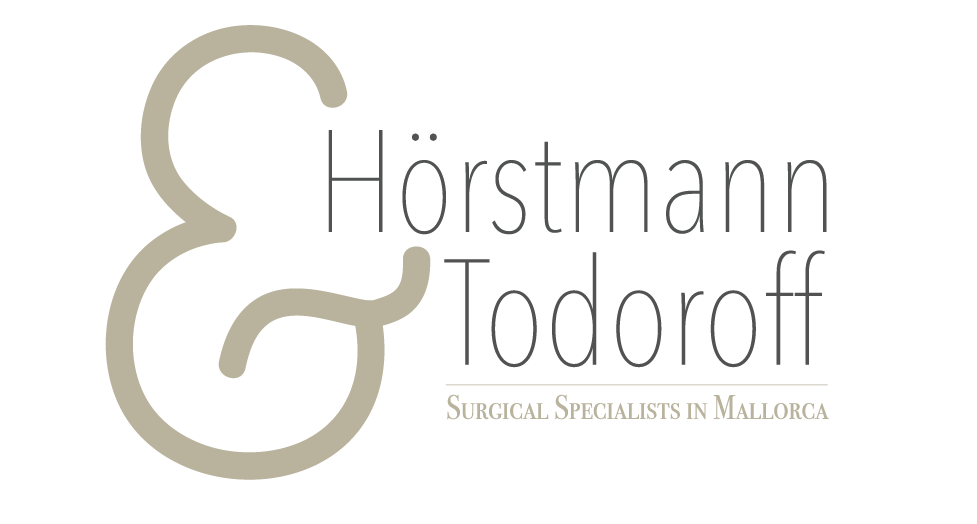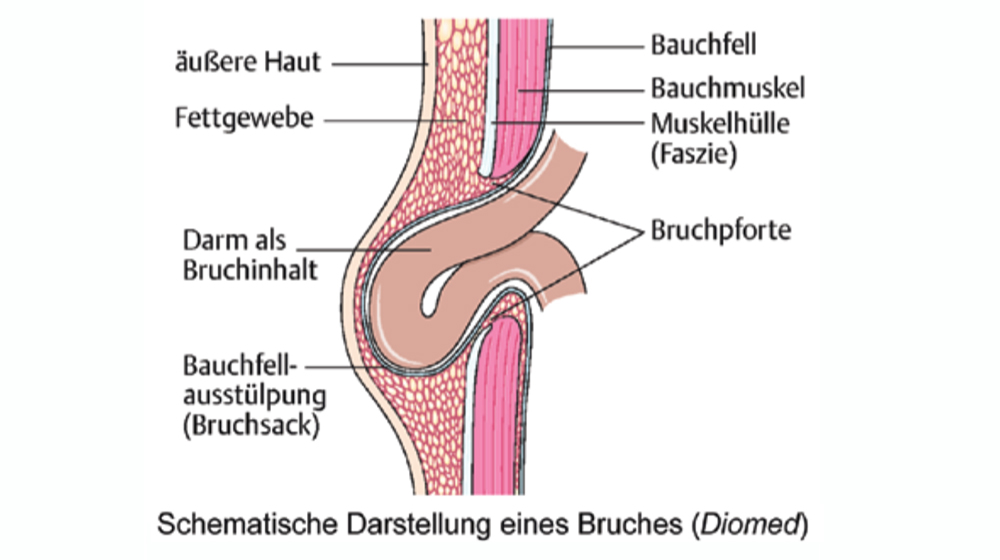Of course you have to close it but how does one do it and how do you get it in the first place?
One is either born with abdominal wall hernias or they develop during life because of weakness of the connective tissues. In the latter case – due to continued intra-abdominal pressure – the connective tissue separates and forms a defect in the abdominal wall. Through this some of the abdominal content- mostly intestine – can slip through to the outside.
The common cause for all abdominal wall hernias is the intra-abdominal pressure. Diseases which elevate this pressure regularly like Prostate-hyperplasia, ascites, chronic constipation but also pregnancies are more than usual associated with hernias.
Hernias often appear at areas of the abdominal wall where this is naturally not formed very strongly. These are hernias in the middle of the upper abdomen (epigastric hernia), hernias in the “belly button” (hernia umbilicalis) and in the groins (hernia inguinalis and hernia femoralis). Furthermore one finds in up to 30% after large abdominal operations so called incisional hernias which in most cases require treatment.
In the normal surgical practice operations of the operation of the inguinal hernia is one of the most frequent ones and is of great socio-economic importance and underline the importance of this initially not dangerous but only surgically soluble problem.
Complications and treatment of abdominal wall hernias are always dangerous when the resulting protrusion can no longer be pushed back or suddenly is really painful because the bulging abdominal contents, the hernial tumor, is stuck in the hernia ring and this tissue is squeezed painfully. This causes an interruption of the blood flow and the tissue death can be the result. In particularly serious cases, the after-effects of an abdominal wall rupture can be life threatening.
Operations on the abdominal wall can be performed under general anesthesia under regional anesthesia (spinal anesthesia) or. There are also surgeons that perform such operations on an outpatient basis. But this is more the exception and the benefits of this are difficult to se for those surgeons which target post-operative control and the safety of the patient uppermost. Usually, the patient is admitted the day of surgery and can leave the hospital already the next day. This is a big step forward when one remembers that a few decades ago hernia patients had to spend 10 days in the hospital, and were bedridden the first week!
Regarding the surgical technique, mesh implants are an indispensable part during the care of abdominal wall hernias. The most common technique is named after the American surgeon Irving Lichtenstein. Sufficient coverage of the hernia defect, gentle conservation of the nerves involved and the use of large-pore surgical meshes keep the complication and recurrence rate low. Although since the use of these materials a lot less recurrences occurred, but the basic requirement for a low complication and recurrence rate is that an experienced surgeon operates, who perfectly masters his technique.
Concerning technology, there are two fundamentally different options: the first, conventional “open” method, in which the hernia is “openly” exposed and then as described above, closed and this closure is secured by mesh implantation. And then there is the second option of laparoscopic hernia surgery.
At numerous meetings the respective advocates of these different techniques get hot heads arguing and praising the relative merits and advantages of their supported technology.
In a controlled, randomized study of the treatment of inguinal hernia tension-free technology type Lichtenstein with mesh and the laparoscopic technique were compared. The only advantage of laparoscopic technique according to this large study is a comparatively smaller amount of postoperative pain during the first 14 days. However, it must be asked whether this small bonus outweighs the disadvantages of general anesthesia, and the longer stay in the operation room and hospital. Leave alone the substantially increased costs of this operation. Especially as the relative minor pain after the Lichtenstein procedure can be easily controlled with a light painkillers. In summery: the Lichtenstein procedure is a simple, easy to learn method with short operation-time whilst the laparoscopic technique is undoubtedly more difficult and expensive, and may cause the laparoscopy inherent complications.
However, of course, after appropriate explanation the decision deciding which surgical technique he wants to undergo remains entirely in the hands of the patient.

